Thank you to Dr. Pat McCue from the Equine Reproduction Laboratory for last month’s article, Progesterone Therapy for Pregnant Mares – Part 1, in which he reviewed the formulations and use of progesterone therapy in mares. Dr. McCue did a yeoman’s task in outlining the formulations and principles of therapy available to veterinarians for the suppression of estrus, pregnancy support, and treating cases of suspected or diagnosed placentitis. However, the maintenance of pregnancy is by far the most common area in which we receive questions about supplementing mares with exogenous (therapeutic) forms of progesterone.
Welcome to The Select Breeders Blog
Progesterone Therapy for Pregnant Mares-Part 2: Common Questions
- Link
- Share
- Comments 2
Progesterone Therapy for Broodmares: Part 1
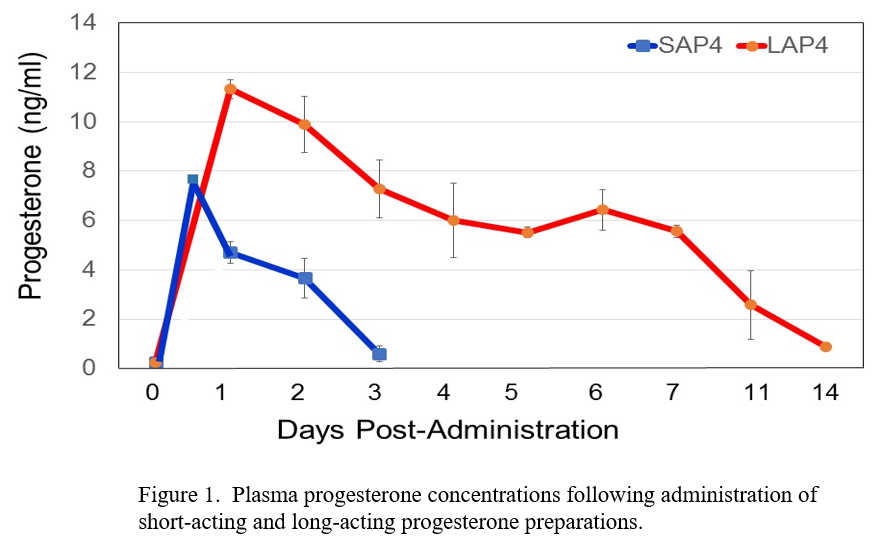
By far, the most discussed topic is supplementation of progesterone to pregnant mares to help them maintain a pregnancy. Many times, the questions stem from the necessity of such therapy, duration, and efficacy of supplementation. Sometimes, even with the best therapy, we fail to reach a good outcome, but the following discussion about the forms of supplementing progesterone is well worth a quick read for any breeder. In our next article, I will review the physiology of progesterone in the pregnant mare and how we use these compounds for therapeutic decisions and intervention in problem pregnancies.
- Link
- Share
- Comments 2
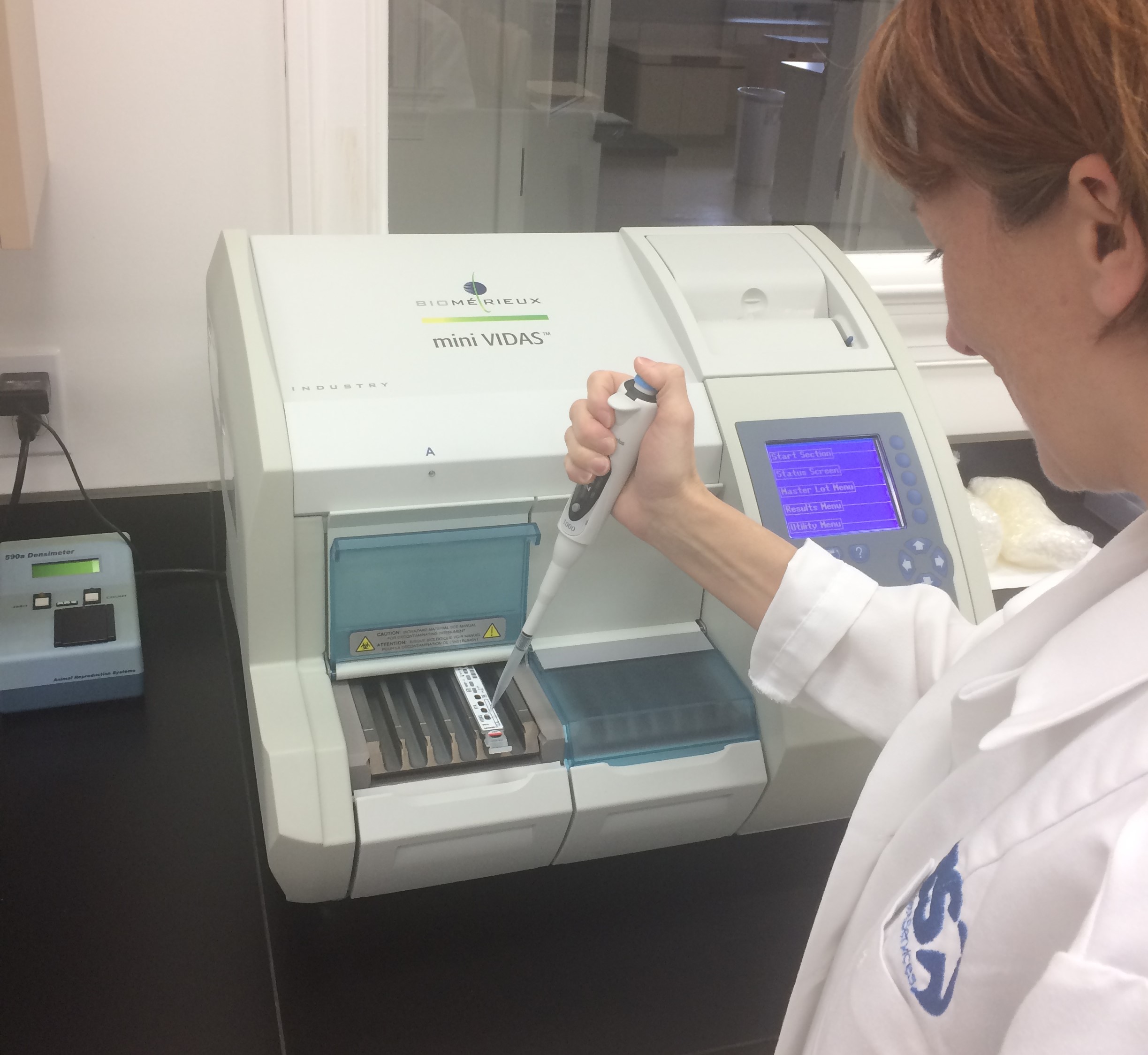
Endocrine diagnostics certainly have a place in the routine management of mares and stallions as well as in diagnosis of problems and diseases. However, there are likely more applications for measuring hormones in mares than stallions. Dr. Ed Squires will discuss the hormones tested in mares in this article and will then cover the testing of stallion hormones in a subsequent article.
- Link
- Share
- Comments 0
Management of Late Gestation Pregnancy Loss in the Mare
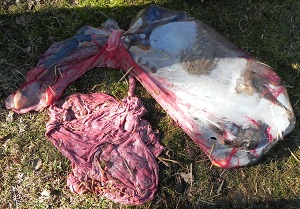
Breeding season in the northern hemisphere is over and hopefully all mares are in foal. Waiting for the arrival of the foals next year has begun. But what if something goes wrong? Abortion after day 45 of gestation occurs up to 3 to 15% in different horse populations. Infectious and non-infectious causes can be involved. It is important, that as long as the etiology of the pregnancy loss is undetermined, every abortion should be assumed as infectious until proven otherwise. How do you best handle the situation when a mare aborts and how do you prevent further damage to the mare or her fellow broodmares?
- Link
- Share
- Comments 0
Equine Seminal Plasma: The Good, The Bad and The Ugly
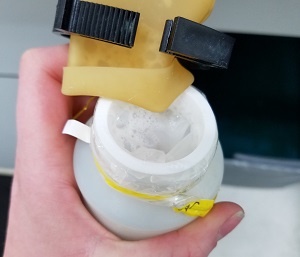
To understand why seminal plasma is beneficial in some situations and potentially harmful in others we must first review what it is, where it comes from and what we think are its roles in reproduction. The term seminal plasma refers to the fluid portion of ejaculated semen in which the spermatozoa are suspended. This fluid consists of secretions from the accessory sex glands in the stallion’s reproductive tract. These include the ampullae, the vesicular glands (seminal vesicles), the prostate gland and the bulbourethral glands (figure 1).
- Link
- Share
- Comments 6
Is the Volume of the Inseminate Important for Fertility?
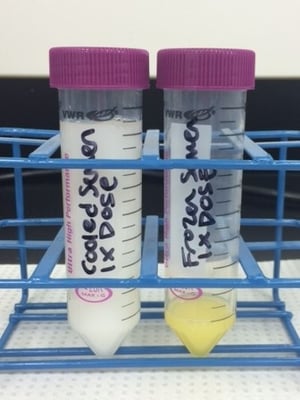
A common question asked by many breeders is whether the volume of semen deposited into the mare affects fertility. When a mare and a stallion mate naturally the entire ejaculate is deposited into the mare. This volume is usually 50 ml or more and includes several billion sperm. However, when breeding mares using artificial insemination, good fertility can be achieved with as little as 1/2 ml of semen. I have been telling breeders for years that the volume of the ejaculate is not important as long as the stallion is producing good sperm numbers. For example, a stallion can produce 8 billion sperm with 80 ml of semen at a concentration of 100 million sperm/ml or 20 ml of semen at a concentration of 400 million sperm/ml. Volume of the ejaculate and concentration are inversely related (i.e. if volume goes up then concentration goes down).
- Link
- Share
- Comments 0
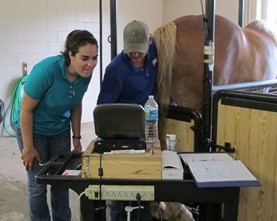
Oxytocin is one of the most utilized hormones in broodmare practice. With so many possible clinical applications, a review of the use of oxytocin in the mare highlights the benefits of oxytocin, as well as necessary precautions with its use. Oxytocin is a nine-amino acid neuropeptide that is produced in the hypothalamus and released by hypothalamic neurons that terminate in the posterior pituitary. It is released in a natural pulsatile manner and exerts its effects by coupling with oxytocin receptors on various tissues such as the endometrium, myometrium, heart, kidney, pancreas, and fat tissue. There are also local effects of oxytocin and receptor binding, notably in the utero-placental tissues that help to increase the effect and intensity of pituitary derived oxytocin pulses. Clinically, oxytocin is available as a sterile injection, 20 IU (international units) per milliter. It can be administered intravenously or intramuscularly.
- Link
- Share
- Comments 3
Ways to Determine Equine Fetal Gender
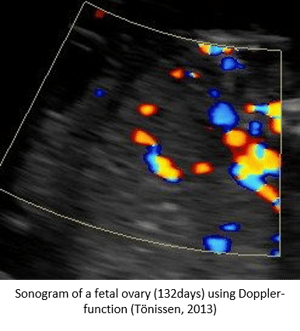
Horse breeders are always interested in the well being of their broodmares as well as the well being of the fetus they are carrying. Advances in reproductive techniques have made it possible to gain insight into how the fetus is progressing as well as the ability to determine its gender. Knowing whether a mare is carrying a colt or a filly can help owners make important decisions concerning their herds and the industry in general. For example, fetal sex determination is used on a regular basis among thoroughbred breeders prior to stock auctions. In this article, we discuss the sorting of equine sperm for sex as well as fetal sex determination via transrectal and transabdominal ultrasound.
- Link
- Share
- Comments 4
Suppression of Stallion and Mare Behavior

Once young colts and fillies reach the age of puberty their behavior may become an issue in the show ring or on the race track. Castrating a colt which you intend to use for breeding purposes may not be an option and mares are not typically permanently sterilized. Their sexual behavior may also cause problems with housing, trail riding, etc. In this article, Dr. Ed Squires discusses some of the common ways stallion and mare owners suppress the behavior of their horses.
What Can Cause a Mare to Lose Her Pregnancy?

Mares can develop problems during pregnancy or be at high risk of losing the pregnancy for a variety of reasons. These include age (old mares frequently have endometriosis in which the uterus is unable to properly supply the fetus with appropriate blood supply and nutrients), physical conditions (placental and fetal fluid abnormalities; body wall tears; chronic debilitating conditions such as laminitis and Cushing’s disease), and acute disease or injury (placentitis, uterine torsion, surgical colic, colitis, acute laminitis, or fractures). When a mare becomes stressed or debilitated, inflammatory chemicals and prostaglandins increase and induce abnormal uterine contractions and potential pregnancy loss. Reproductive problems that arise during gestation, however, when detected and diagnosed early, can still result in the survival of the mare and usually the foal. The abnormalities most commonly seen during the middle to late stages of pregnancy will be discussed in this article.





